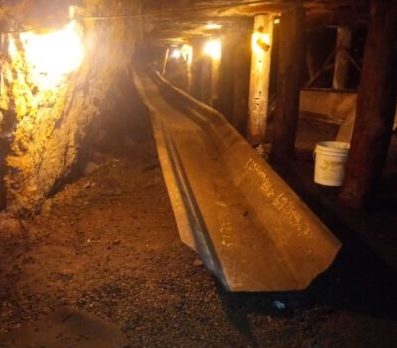 Long before the Beverly Hillbillies was a TV show, Northwest PA was known for its superior crude oil. Pennsylvania was not the first place people found oil. It has been used for centuries – clear back to the Ancient Egyptians. But Pennsylvania was the first place that oil was intentionally sought after for commercial use and its discovery launched a global industry that has changed our world forever.
Long before the Beverly Hillbillies was a TV show, Northwest PA was known for its superior crude oil. Pennsylvania was not the first place people found oil. It has been used for centuries – clear back to the Ancient Egyptians. But Pennsylvania was the first place that oil was intentionally sought after for commercial use and its discovery launched a global industry that has changed our world forever.
After a scenic hour drive north of route I-80 into Venango County, through Cook Forest State Park and several quaint towns, we came to Titusville, PA – the home of the Drake Well Museum and Park (Drake Well). This is more than just a simple museum as the property houses several replicas and displays all pertaining to oil.
We began our tour in the museum. A short movie introduced us to the beginnings of the oil industry and its major players. From there we worked our way around the many interactive displays which involved all 5 senses: smelling a bottle of whale oil and crude oil, hearing the sounds of various drilling apparatus, watching a moving diorama, and touching some rocks in which oil has been found – fossils included.
We knew that many things in our modern life were made from oil/petroleum, but there were many others we didn’t know about – such as crayons.
After the museum, we meandered around the Park. There are 11 different displays situated on the property. Of course our first stop was the Drake Oil Well Replica, which is a working, board-for-board replica of Drake’s engine house that stands over the famous well site containing a reproduction vintage steam engine demonstrating how oil was pumped from the ground in 1859. The knowledgeable docent started the pump engine for us, and we watched the oil flow from the pipe into a barrel, engaging the senses of sight, sound, and smell. (The odor was not as offensive as I anticipated, but it did seem to stay in my sinuses for quite a while.)
Next, we moved on to the Spring Pole Drilling Rig, where my husband and son tried their hands (technically their feet) at drilling. The Oil Transportation Building housed various modes used to transport drilling machinery through the years, from a horse-drawn rig to a 1927 GMC truck. The Central Power Building operated several oil rigs around the property, similar to the moving diorama in the museum. And the Standard Steel Drilling Rig showed us the improvement in materials and design that happened over the next 60 years. There was so much to see and explore that we never got to the Native American Oil Pits – where oil seeped up through the ground and was used to dress their hair, waterproof hides, and even heal skin.
The Drake Well Museum also includes two satellite attractions. Historic Pithole City (Pithole City) was a happening town that lasted just three years, booming when oil was discovered and dying just as quickly when the oil ran out. The second is the McClintock Well #1 (McClintock Well), which remains active to this day.
Somewhere in my planning, I got the impression that touring the Drake Well Museum and Park would take about 45 minutes. If you truly want to experience this place, plan on spending more time than that. We were there for more than two hours and still did not get to see everything. We just might need to make another trip back.



